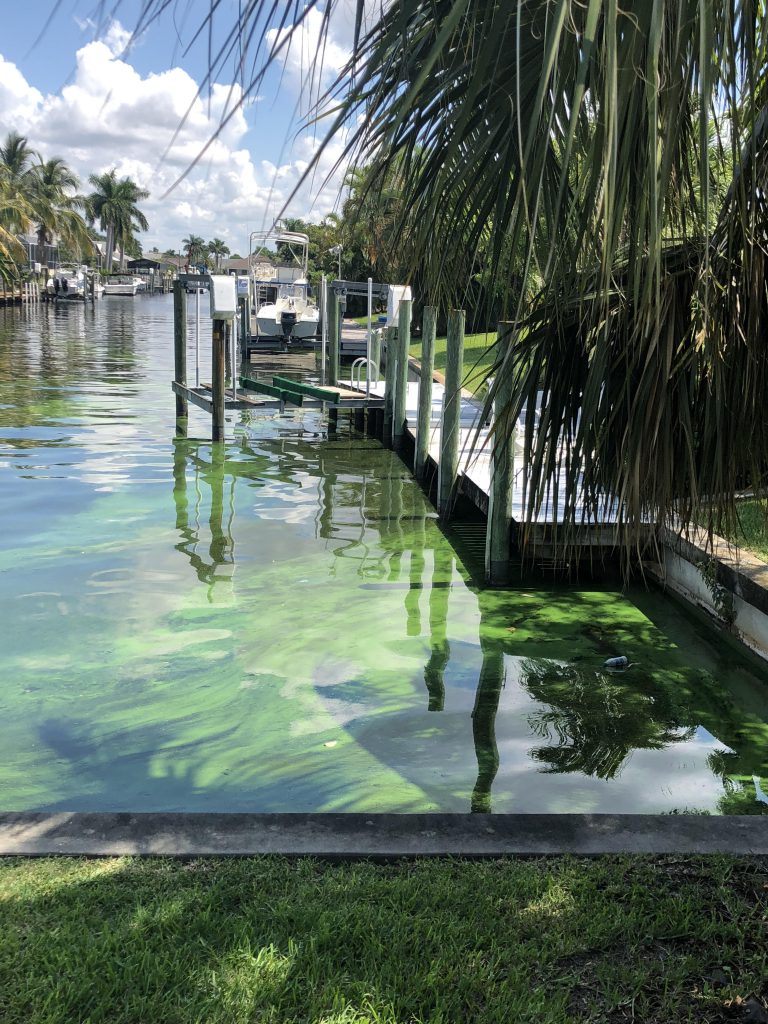Cyanobacteria
Harmful cyanobacteria blooms (also known as CyanoHABs) in freshwater, estuarine or marine systems are potential public health threats in nearly every state in the U.S. due to their presence in drinking and recreational waters.
The toxins produced by CyanoHABs are called Cyanotoxins. Humans and wildlife alike can be exposed to Cyanotoxins via contaminated drinking water or can be transmitted via food raised in or irrigated with contaminated water. Recreational exposure to cyanotoxins can occur via direct skin contact, inhalation, or inadvertent ingestion of water. Since CyanoHABs encompass a multitude of species, the toxic byproducts of the blooms can range from mild irritants to hepatotoxins and neurotoxins. Mild reactions include rashes and allergies. Vomiting, nausea, fever, myalgia, hallucination, liver and kidney diseases and cancers, neuromuscular problems and potentially even death are all symptoms of more severe CyanoHAB exposure. CyanoHABs have been linked to deaths of both wild and domesticated animals, including multiple dog deaths.
The public health threat is potentially intensified when standard water treatment technologies do not effectively remove these toxins. In some cases, water treatment can exacerbate the problem rather than alleviate it. For example, the use of copper sulfate as an agent to control a bloom may, in fact, disrupt cells and release toxins into the water. However, it is not known how often toxin-producing blooms occur in drinking water sources and publicly accessible ponds, or if most standard drinking water treatments reduce toxin concentrations sufficiently to protect public health. It is also unclear whether the public is being routinely exposed to very low levels of these toxins in drinking or recreational waters or what the long-term impacts might be. In 2015, a study of the contiguous US found a statistical link between local cyanobacteria blooms and clusters of deaths due to non-alcoholic liver disease. The discovery of CyanoHAB impacts like this one are ongoing. Because the adverse effects of Cyanotoxins restrict their use in experimental studies, it is difficult to develop scientifically-based safety guidelines for human ingestion and inhalation.

For these reasons and because cyanobacterial toxins are extremely potent, the U.S. Environmental Protection Agency (EPA) has included selected cyanobacteria and cyanobacterial toxins on their Contaminant Candidates List. This requires data solicitation to assess the occurrence of these toxins in drinking water sources and treated drinking water, the health effects associated with these exposures, and analytical methods for detecting these toxins in water. Legislative mandates in the Safe Water Drinking Act and the Clean Water Act require attention be paid to the presence of potentially harmful substances in drinking and recreational waters; however, specific guidelines or regulations for these toxins have yet to be enacted.
Additional Resources:
» EPA: Cyanobacterial Harmful Algal Blooms (CyanoHABs) in Water Bodies
» Other Freshwater HABs
» ASPCA Poison Control Center
